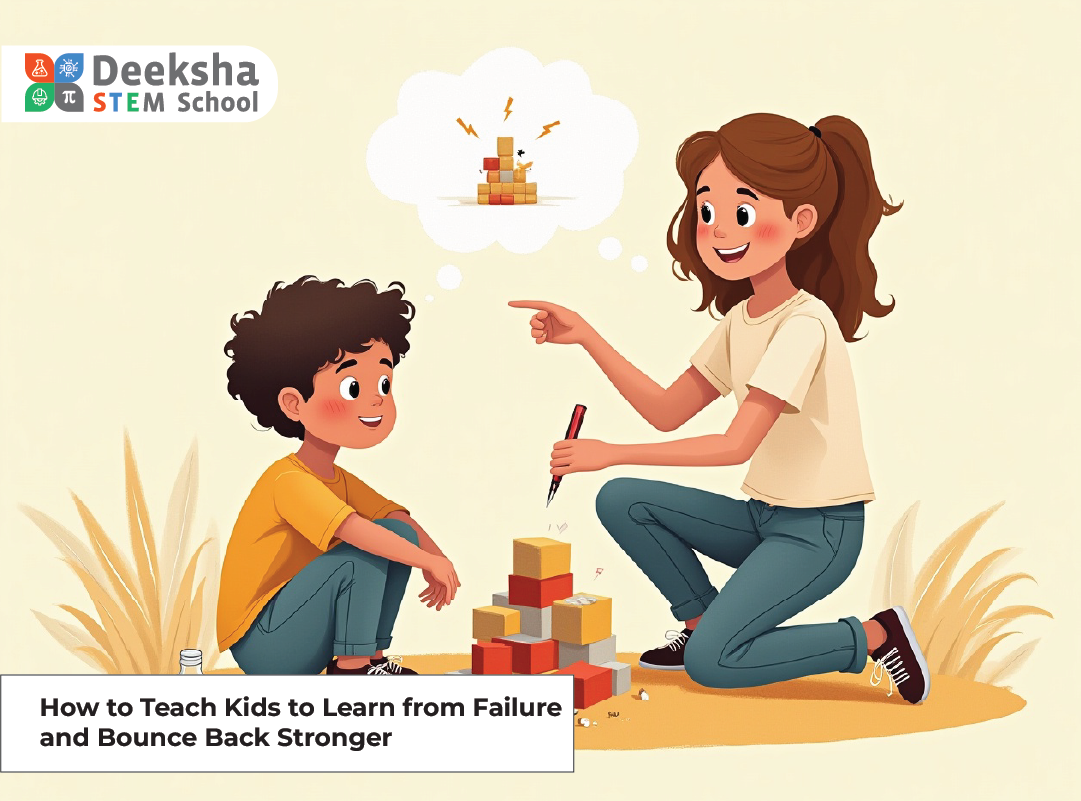How to Introduce STEM to Reluctant Learners

Introduction
While some children naturally gravitate toward STEM (Science, Technology, Engineering, and Mathematics), others may feel intimidated or uninterested in these subjects. Reluctance toward STEM can stem from various factors, such as a lack of confidence, past experiences with math and science, or misconceptions about the difficulty and relevance of these fields.
Introducing STEM to reluctant learners requires a different approach—one that focuses on engagement, accessibility, and hands-on experiences. By using creative strategies, parents and educators can help reluctant learners see STEM subjects as fun, meaningful, and accessible. Here’s how to spark interest in STEM for even the most hesitant students.
Start with Real-World Applications
Show the Relevance of STEM in Everyday Life
One of the reasons children may be reluctant to learn STEM is that they don’t see how it relates to their everyday lives. Demonstrating how STEM impacts the world around them can help make these subjects more interesting and relatable.
- Examples of real-world applications:
- Technology in daily life: Explain how devices like smartphones, video games, and computers are created through programming and engineering.
- STEM in sports: Show how physics and math are used to improve athletic performance, measure speed, or design sports equipment.
- Cooking and chemistry: Teach children how cooking involves chemical reactions, such as how baking powder helps cakes rise.
Connect STEM Concepts to Personal Interests
Find out what the child is interested in and use that as a starting point for introducing STEM concepts. If a child loves animals, explore biology and environmental science through projects about animal habitats or ecosystems. For a child who enjoys art, connect technology and design by introducing digital art or graphic design software.
- How to connect STEM to interests:
- Music lovers: Introduce the science of sound, frequency, and audio engineering.
- Outdoor enthusiasts: Explore nature-based STEM activities like gardening, weather observation, or building birdhouses.
- Creative kids: Use tools like Tinkercad for 3D design or Scratch for coding animated stories.
Use Hands-On, Experiential Learning
Incorporate Project-Based Learning
For reluctant learners, traditional teaching methods may not be effective. Instead, opt for project-based learning, where children engage in hands-on activities that let them experiment, build, and create. This approach helps students grasp abstract concepts through real-world problem-solving.
- Examples of STEM projects:
- Building simple machines: Create a lever, pulley, or catapult using household items to learn basic physics principles.
- Coding challenges: Use platforms like Code.org or Blockly for interactive, step-by-step coding activities.
- DIY science experiments: Conduct simple experiments, such as making a volcano with baking soda and vinegar, or growing crystals.
Provide Opportunities for Tinkering
Tinkering allows children to explore STEM concepts without the pressure of following strict guidelines or achieving a specific outcome. Provide them with materials like LEGOs, magnets, gears, or circuit kits and encourage them to create, dismantle, and rebuild.
- Benefits of tinkering:
- Promotes exploration and curiosity in a low-pressure environment.
- Builds problem-solving skills as children figure out how to assemble or fix things.
- Encourages creativity through open-ended play and experimentation.
Use Everyday Objects for STEM Activities
You don’t need specialized equipment to teach STEM. Use everyday items to create simple, engaging activities that introduce core STEM concepts.
- Examples of STEM activities using everyday items:
- Egg drop challenge: Use household materials to create a contraption that protects an egg from breaking when dropped from a height.
- Paper airplane competition: Teach principles of aerodynamics by designing paper airplanes and measuring how far they fly.
- Homemade slime: Introduce chemistry concepts by making slime with glue, borax, and water.
Gamify STEM Learning
Use Educational Games and Apps
Gamifying STEM learning can transform abstract concepts into engaging, interactive experiences that motivate reluctant learners to participate. Many STEM-focused games and apps turn learning into a fun challenge, complete with rewards, levels, and progress tracking.
- Recommended educational STEM games:
- Minecraft Education Edition: Teaches coding, engineering, and problem-solving through game-based challenges.
- Prodigy Math Game: An interactive math game that adapts to each child’s learning level.
- Osmo: Combines hands-on play with digital learning, offering STEM games that teach coding, math, and problem-solving.
Incorporate STEM Competitions and Challenges
STEM competitions, such as robotics challenges, coding competitions, or science fairs, provide opportunities for children to apply what they’ve learned in a competitive and collaborative setting. Even simple at-home challenges, like building the tallest tower with blocks or creating the fastest paper boat, can encourage a sense of achievement and excitement.
- Benefits of STEM competitions:
- Encourages teamwork and social interaction with other students.
- Boosts motivation by setting clear goals and rewards.
- Enhances skills through practical problem-solving.
Focus on Building Confidence
Provide Positive Reinforcement
For reluctant learners, lack of confidence can be a significant barrier to engaging with STEM. Positive reinforcement helps build their self-esteem by celebrating their successes, no matter how small. Recognize effort, persistence, and progress rather than just outcomes.
- How to provide positive reinforcement:
- Praise effort over results: Emphasize the importance of trying and learning, even if the project doesn’t turn out perfectly.
- Set achievable goals: Break tasks into smaller steps to create a sense of accomplishment as each goal is met.
- Encourage a growth mindset: Reinforce the idea that skills can improve with practice and perseverance.
Use Peer Learning and Mentorship
Pair reluctant learners with more experienced students or mentors who can guide and support them through challenging tasks. Peer learning encourages reluctant learners to ask questions, share ideas, and learn collaboratively.
- Benefits of peer learning:
- Creates a supportive learning environment where children feel comfortable.
- Encourages cooperative problem-solving and teamwork.
- Provides role models who demonstrate a positive attitude toward STEM.
Make STEM Fun with Creative and Artistic Elements
Integrate Art into STEM (STEAM)
Adding an Art component to STEM, turning it into STEAM, can make subjects more appealing to reluctant learners who enjoy creative activities. Integrating art with science, technology, engineering, and math allows children to approach STEM concepts from a different perspective, making learning more engaging.
- Examples of STEAM activities:
- Create art with coding: Use platforms like Tynker or Scratch to code digital artwork or animations.
- Build musical instruments: Explore the science of sound by constructing instruments from recycled materials.
- Design structures: Use materials like clay or cardboard to create architectural models, teaching principles of engineering and design.
Incorporate Storytelling and Role-Playing
Use storytelling and role-playing to make STEM more accessible by creating scenarios where children take on roles such as engineers, scientists, or explorers. This approach allows children to connect with STEM subjects in a narrative context, making it more interesting and fun.
- Ideas for storytelling and role-playing:
- STEM adventure stories: Write or read stories about characters who solve problems using STEM skills.
- Role-play as scientists or astronauts: Set up a “lab” or “mission control” at home to make STEM activities feel like exciting adventures.
- Use comic strips or storyboards: Let children create comics about scientific discoveries or engineering inventions.
Offer Flexibility and Choice in STEM Learning
Allow Children to Choose Projects Based on Their Interests
Providing options allows children to explore STEM subjects at their own pace and according to their interests. Offering choices makes learning more personalized and engaging, reducing the pressure that often comes with structured lessons.
- Ways to offer flexibility:
- Present a variety of project options and let the child choose which to pursue.
- Set up learning stations where children can explore different STEM activities, such as robotics, chemistry, or coding.
- Let them explore their own questions: Encourage children to come up with their own STEM questions and experiments.
Use a Self-Paced Approach
Allow reluctant learners to progress at their own pace without the pressure of keeping up with others. Self-paced learning encourages exploration and reduces stress, giving children the freedom to revisit concepts they find challenging.
Conclusion
Introducing STEM to reluctant learners requires creativity, patience, and a willingness to adapt teaching methods. By focusing on hands-on learning, real-world applications, gamification, and creative elements, parents and educators can help children see STEM as an exciting and approachable field.
With the right strategies, reluctant learners can develop confidence in their abilities, discover their interests, and unlock their potential in STEM.




